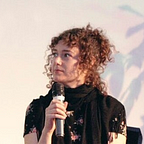People of Parity: Erin Grasmick, DevOps Engineer
Provisioning systems and tracking down bugs isn’t everyone’s idea of fun, but it is Erin Grasmick’s. With a degree in computer science, Erin always assumed she would be a programmer. But after over a decade of administering Linux systems, Erin realised that making systems work well is more fun, and she made the decision to stay in DevOps engineering. Her original interest was in distributed systems (her academic job was administering a large cluster of nodes), so she joined Parity to get into the bleeding edge of distributed systems.
Erin has a warmth characteristic of her Wisconsin roots, and I happily chatted with her to learn about what it’s like doing DevOps at Parity, making things “observable,” and her tech conference crew.
What are you working on at Parity?
At Parity, DevOps is a little different because there’s a wide spectrum of potential tasks. So you’re working on goals you choose — for example, I’ve been working on getting logging more centralised for Polkadot and Substrate to make it easier for devs to analyse issues — but then there are also things that happen that you have to react to. For instance, we’ll have issues with some service like matrix and we have to debug it and figure out what’s wrong. Overall I’m making sure that everything is looking good, systems are looking healthy, updates don’t break things, and security looks good.
What are your favorite things to work on?
I really like monitoring and metrics. There’s something really satisfying about looking at a really useful graph, something you can use to debug — where you look at it and you know what’s wrong. By using the net usage graph of the Kovan mainnet, we realised that one of the new releases was sending a ton of traffic because there were messages spamming the network. We would have never known if we didn’t have a network monitoring graph and notifications set up. The monitoring buzzword is “observability” — the goal is to make system happenings observable.
You joined Parity not too long ago. What was onboarding like?
I was assigned a mentor, but by the time I was hired I already attended Web3 Summit and chatted with DevOps colleagues, so I kind of knew what the infrastructure was like and what was going on. It helps being in the office for onboarding because you can just sit down with someone and they can go over things and you can look at each other’s screens. I think the toughest part was not knowing what questions to ask. I knew some stuff, but there were things I didn’t know to ask to be debriefed on. But it was a good cultural fit. I had lunch with Gabriel and Felix (other DevOps engineers) before I started. It was an interview, kind of, but it was also just lunch. We got along and that made things easier.
What’s different about Parity than what you expected?
I’m not sure what I expected. I wanted to work for a company that was open-source, that was really important to me. But I didn’t know how private companies worked because I had only worked for universities. Before I had mostly worked with on-site instead of cloud systems, and that makes a surprising amount of difference — cloud has a totally different set of tools. The biggest difference has been knowing how to use different cloud providers tools and how to leverage them in the best way.
If someone is looking to learn DevOps, where do you recommend they start?
Install a minimal Linux distribution, it will teach you how to start configuring a system very quickly. Even just following a guide on the internet forces you to learn these tools, how to get into your system, and what makes up an operating system. Doing operating system-level stuff is also important. Having an understanding of things like heaps and stacks is not required, but it’s definitely useful. Read the Arch wiki, it’s the most useful resource in the world. And join IRC, join Freenode, and ask questions.
How did you get into Linux?
My dad bought a family computer in 1996. It wasn’t Linux, it was a Mac, but I just sort of took to it. Being a computer person, Linux is the next step. I think I first installed Linux at 15 years old. You make friends on the internet whom you spend time chatting with on IRC. That was all Linux people. When you think of Linux users, you imagine them shut in the closet. But there’s definitely a social aspect to it. The most fun thing I do is hang out at Linux conferences with my friends, most of whom I’ve met on IRC.
I’ve heard that you have a tech conference crew. How did that happen?
We came together for CCC. The first one I attended was in 2016 and it was really nice to see in person all these people that I chatted with. After that, we kind of made a thing out of it, a group called “Freeside.” It’s really just a group of internet friends who are in communication all the time. But it’s fun to be in person and hack on stuff. We made our own stickers for our group, but it’s just completely invented — a lighthearted group of people that get along.
Stay tuned for more “People of Parity.” Join the newsletter to be informed of new articles, tech releases, and events.
Originally published at www.parity.io on March 29, 2019.
